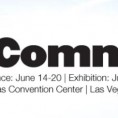Marketing and communications speakers (especially those who focus on generational differences, senior living, or aging) make no bones about it: It’s no secret that Baby Boomers, Generation Xers and Millennials are all influential in the workplace, and each has different needs as consumers, as workers, and as members of the modern family. What’s more, these generations differ greatly from one another in how they learn, how they consume, and how they interact. To tell us more about Baby Boomer trends, we connected with AARP Positive Living Expert and author of The Best of Everything After 50: The Experts’ Guide to Style, Sex, Health, Money and More, Barbara Hannah Grufferman.
S: What does the term “Baby Boomer” mean to you, and how would you define it in terms of various characteristics?
G: Technically, anyone born between 1946 and 1964 is a Boomer, including me, as I was born in 1956. But I think the focus is now shifting away from “Boomers” and more toward the “50+ market” in general, as Gen Xers start to enter this demo. Notable characteristics or descriptions of “Boomers” include: Seekers, inventors, empiricists, re-inventors, risk takers. We’re not following the paths of prior generations, but reinventing just about everything as we go along. We’re creating a new rulebook, often with no rules at all.
S: What are some of the most important trends and happenings we’re seeing emerge among people who hail from this age group that even marketing and communications speakers and trends experts might not be aware of?
G: Living longer, working longer, starting new careers and businesses later in life…Reinventing our lives. Many of us are in the sandwich generation, helping adult children as well as aging parents. Over 50% of people over 50 are single by choice or circumstance, which is having a huge impact on lifestyle and finances, especially for women.
S: What are a few unexpected things people would never guess about members of this generation?
G: We’re very sexually active; have the highest disposal income compared to any other demographic; and we are the main driver behind the sales and growth of key technologies, including “all things Apple.”
S: How does this generation fundamentally differ from those which came before – and those which have followed since?
G: Previous generations viewed retirement as the goal when thinking about life after 50. This generation wants to know what’s next. Wants to explore, reinvent, and make a difference in the world. We also feel we’ve earned it. We’ve earned the right to take back our lives if most of our years were given to others (partner, children, work, etc.). We differ from the generation that’s coming up behind us in that we earn more money, and have more disposable income, at the moment.
S: How might Baby Boomers be unexpectedly similar to other generations in ways casual observers might not expect?
G: Honestly, we’re similar in that a lot of us are at a period in our lives where we’re re-imagining what life can be next. Like younger generations, we’re traveling, we’re acquisitive, we’re inquisitive, and we’re not just sitting around thinking about retirement. More Baby Boomers than you may think are even going in different directions with their careers and are starting businesses to follow their passions. To properly re-imagine your life you’ve got to have all the proper tools and toys such as LifeReimagined.org.
S: How have Baby Boomers’ temperaments and perspectives changed over time – and what’s the best way to connect with them bearing these shifts in mind?
G: I think the biggest shift in habits is that we’re no longer as aspirational as we once were.
When we were younger, we were very aspirational. We wanted to look like that celebrity, be like that celebrity, wear that celebrity’s lipstick and clothes, etc., which made us build realities and images of ourselves that weren’t completely true. Now that we’re older and wiser, we’re redefining ourselves on our own terms, and to properly communicate with us, the first step is to understand where we’re coming from. We’re not trying to keep up with the latest and most talked about events and people – what we’re trying to do is to find inspiration that we can inwardly apply to ourselves.
S: What advice would you give businesses or brands hoping to more effectively engage Baby Boomers that they should hear, and not just from marketing and communications speakers or professional trendspotters?
G: I think businesses are beginning to realize that the best way to reach us is not indirectly—meaning we just happen to see an ad, either in print or on television, that’s targeted toward a much younger audience—but rather to directly engage with us. Going back to what I said earlier, we’re not as aspirational – we want to now be inspired by others. Advertisers need to talk to us and engage with us in terms of what our lives are like right now, today. It’s such an important difference, and I don’t think they’re getting that, still. AARP The Magazine did a great piece that discusses this very thing, where they used examples of how our generation is actually being negatively displayed in advertisements and that we’re being still being sold short as a demographic.
S: More and more boomers are moving online for their news, information, shopping, and more, as marketing and communications speakers often tell us. What’s the best way to capture their attention and interact with them these days?
G: Online is a great place to find us – especially on social media. 28 million people over 55 already subscribe to Facebook and Boomers buy twice as much online as younger adults. You’ll also find that a lot of organizations that are specifically aimed at the 50+ demographic, such as AARP, also house their most helpful tools online. AARP, as an example, provides its members with a wealth of information across their publications (AARP The Magazine and AARP Bulletin), LifeReimagined.org(which provides tools for those looking to reimagine their lives), and AARP.org, which provides additional access to health, financial, career, and important news and information for those 50+.
For a more in-depth look at succeeding in a multi-generational workplace, you can check out Make Change for You, now available in paperback. Information for dynamic keynote speeches focusing on generations and millennial marketing is available at: www.akeynotespeaker.com/speaking/
GET YOUR FREE COPY NOW!
books
Limited-Time Offer: Download Free eBook THINK SMARTER Today!
No spam. We respect your privacy.














